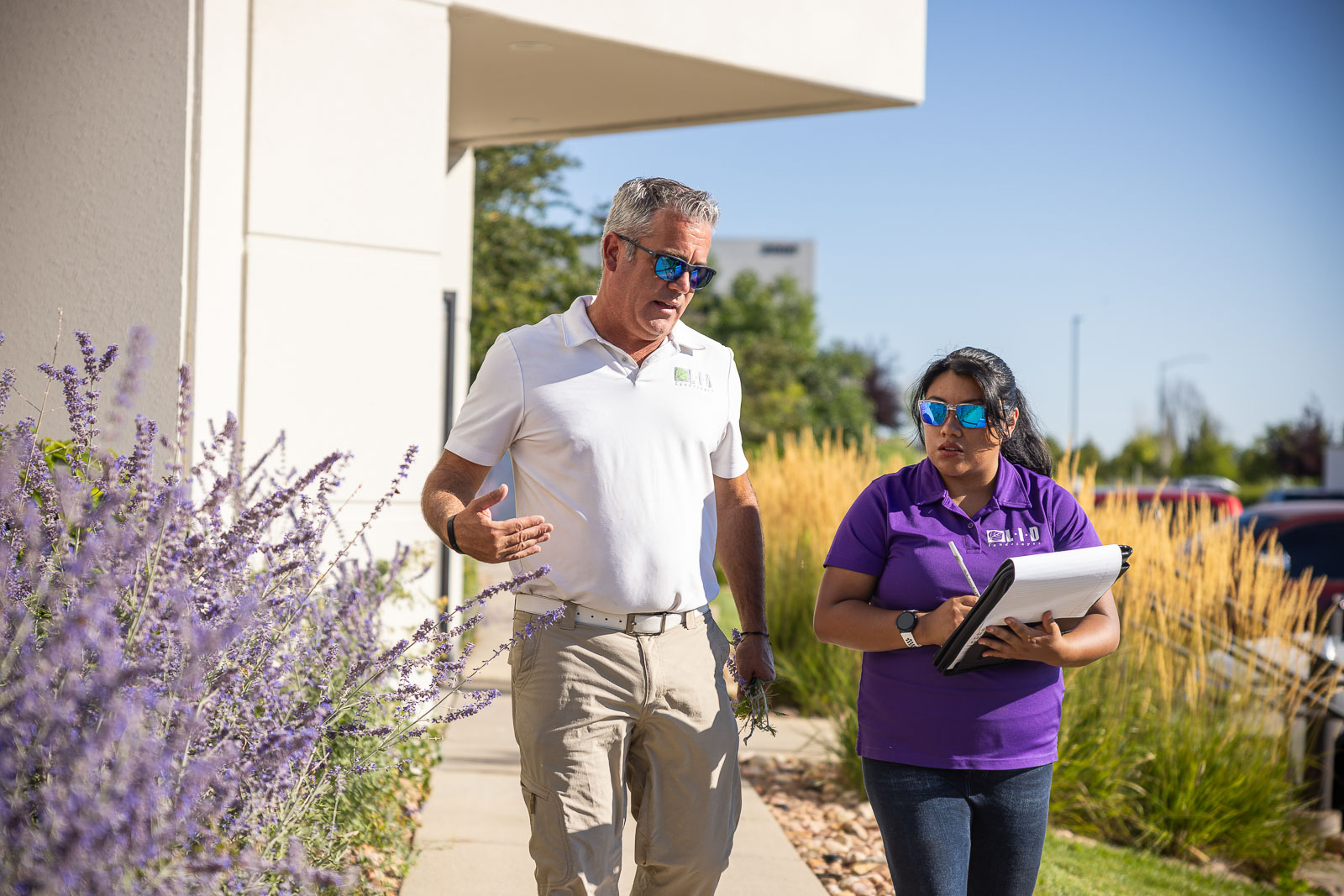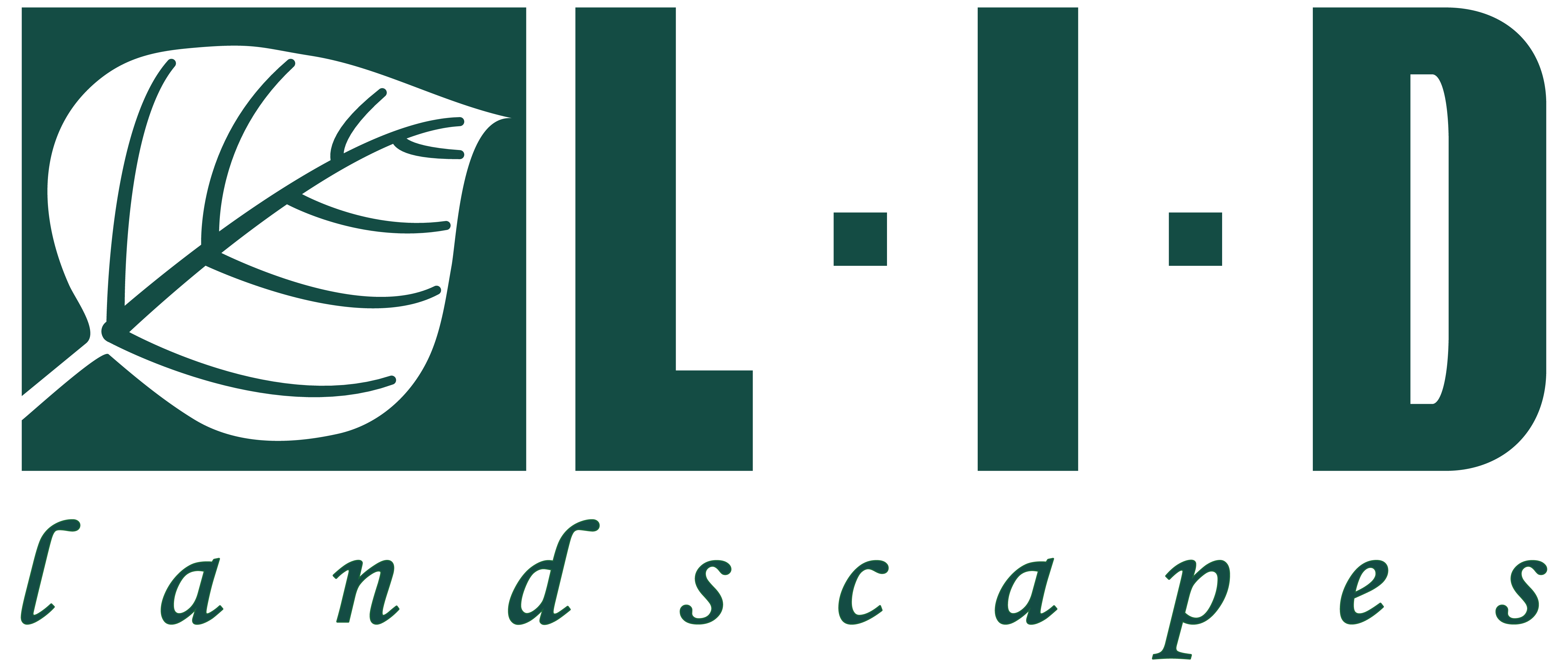
FAQs: Your Boulder Landscape Questions Answered by Local Experts
Your ultimate guide to premier landscaping solutions in Boulder
Welcome to our FAQ hub, where your landscaping visions flourish. Here, we've curated responses to your most pressing inquiries about our services, design concepts, and maintenance advice. Whether you're envisioning intricate irrigation, or a striking hardscape, we're here to support you through every phase. Dive into our FAQs to transform your outdoor space into a work of art.
What region do you service?
We serve the Boulder area, including Niwot, Gunbarrel, and Longmont. See all the areas we serve for further information.
What type of deicing materials do you use?
LID uses a variety of resources, such as rock salt, calcium-blends for sidewalks, and a less environmentally impacting liquid brine.
How do you communicate with your customers about snow services?
We issue an email to our clients informing them of the forecast and our plan to deploy based on reports from the National Weather Service.
When does LID make the decision to deploy its crews?
What payment options do you consider?
Do you offer any discounted services?
Can you plow my parking lot before our business opens in the morning?
What do you do if there is snowfall during the day while businesses are open?
Do you provide shoveling services for sidewalks?
Yes, LID can provide these services for sidewalks.
Do you have equipment to haul snow in the event that we need it?
Do you service HOAs or single-family residences?
We do not provide snow services to single-family residences but we do provide services to HOAs on a case-by-case basis.
Why is professional maintenance important?
You probably wouldn’t allow your business to go without proper care and maintenance as it would deteriorate quickly and lose value. The same applies to your landscape. You have made a significant investment in your landscaping and it should be properly cared for through a professional turf and plant health care program designed to protect that investment and ensure a healthier and more enduring landscape. An Account Manager will be assigned to manage your property and assist you with additional needs you may have on your site.
How much does professional landscape maintenance cost?
What is included in your maintenance program?
Do you collect grass clippings after each mowing?
Will I receive service each week?
Depending on your contract, we’ll usually visit once a week during most of the season. In April, we perform your spring cleanup and usually begin weekly mowing by the beginning of May. In late October through November, we visit your site approximately every 10 days to perform fall operations including leaf cleanup.
When will I be billed for your services?
Who is my contact person for maintenance questions?
Who do I call if I want flowers, vegetables or bulbs planted?
When do you install seasonal color?
We offer four possible rotations of annual flowers (or seasonal color): spring, summer, fall and winter. The timing of each installation depends solely on the weather.
A rough timeline follows:
Spring: bulbs late October / early November, spring plantings Late March-Early April
Summer: after Mother’s Day
Fall: September
Winter greens: mid-November
What if I have a special project and I am not sure if it is a Maintenance or Construction item?
If I have a struggling plant or lawn problem whom shall I call?
If I have a dead plant what should I do?
What are your pruning practices?
Most landscape plants require some form of pruning, whether to preserve a loose, natural form, or to create tight, compact shapes. Each individual tree or shrub has its own, unique pruning needs, depending on variety, exposure and desired result. Unless you have formal hedges or topiaries, our pruning philosophy is to encourage the natural form of the plant.
The majority of our in-season pruning focuses on removing spent blooms and removing dead or damaged limbs. It is equally important to know when not to prune. If you prune some species during the summer you may limit the plant’s ability to produce another season’s interest (i.e. berries, hips, fall blooms).
Because it is the best time of year to observe the natural shape of plants, and certain plant materials respond better to pruning that would normally stress them during the active growing season, we also provide one dormant pruning that can be an add on to your maintenance contract.
How do I go about contacting my Account Manager?
Who do I call with billing questions?
What if it rains on my scheduled maintenance day?
Should I core aerate my lawn?
Why do I need to mulch my beds?
Why is professional maintenance important?
How much does professional landscape maintenance cost?
What is included in your maintenance program?
Full service maintenance includes mowing and trimming of all turf areas, removal of grass clippings as needed, blowing of all hard surfaces, removal of leaves and other debris from turf area, and removal and clean up of weeds, leaves and debris in bed areas. Our maintenance program can be tailored to your needs.
Will I receive service each week?
When will I be billed for your services?
Who is my contact person for Maintenance questions?
Who do I talk to when there is a crew working on my site?
Who do I call if I want flowers, vegetables or bulbs planted?
You can call your Account Manager at any time to discuss flower needs. We also have additional resources and people to help our clients create new designs and ideas. Your Account Manager can set this up.
When do you install seasonal color?
We offer four possible rotations of annual flowers (or seasonal color): spring, summer, fall and winter. The timing of each installation depends solely on the weather. A rough time line follows:
Spring bulbs: late October – early November
Spring plantings: Late March – early April
Summer: after Mother’s Day
Fall: September
Winter greens: mid-November – mid-December
What if I have a special project and I am not sure if it is a Maintenance or Construction item?
If I have a struggling plant or lawn problem, whom shall I call?
If I have a dead plant what should I do?
What are your pruning practices?
Most landscape plants require some form of pruning, whether to preserve a loose, natural form, or to create tight, compact shapes. Each individual tree or shrub has its own, unique pruning needs, depending on variety, exposure and desired result. Unless you have formal hedges or topiaries, our pruning philosophy is to encourage the natural form of the plant.
The majority of our in-season pruning focuses on removing spent blooms and removing dead or damaged limbs. It is equally important to know when not to prune. If you prune some species during the summer you may limit the plant’s ability to produce another season’s interest (i.e. berries, hips, fall blooms).
Because it is the best time of year to observe the natural shape of plants and certain plant materials respond better to pruning that would normally stress them during the active growing season, we can also provide one dormant pruning (Feb-Mar) that can be added on to your maintenance contract.
How do I go about contacting my Account Manager?
Who do I call with billing questions?
What if it rains on my scheduled maintenance day?
In the event of a rain day, we determine if our operations will be harmful to your landscape (i.e. create ruts, tracking of mud, etc.). If we decide we may cause harm then we will not perform maintenance that day and schedule you the following day.
Should I core aerate my lawn?
Why do I need to mulch my beds?
What are the steps involved with a typical landscape improvement project?
Every project follows three major stages when creating a beautiful, long term successful landscape: design, installation and maintenance. Each stage is important and we have proven methods and experienced team members to make each part of your project an enjoyable experience and a beautiful result.
How do you begin the process of creating a beautiful landscape?
Either call our office to set a convenient time to meet or use the contact us feature of our website to request a meeting. This meeting establishes your expectations and allows one of our landscape professionals to visit your property and recommend the best way to address your needs. This usually takes one of the following three approaches:
A simple proposal without a landscape plan when the needs are straightforward and the work can be identified during the initial meeting, such as if there is information that needs to be either researched or surveyed and when a permit may be required.
We will prepare an accurate landscape plan detailing the landscape improvements that you wish to create when the scope of your desired improvements merit the exploration of well thought out alternative solutions.
Lastly, we prepare preliminary plans to identify appropriate solutions for your consideration, leading to a final landscape plan that can be installed as one project or in phases over time.
Are there fees involved for a typical landscape improvement project?
There is no fee for the initial meeting. However, if a landscape plan is required to communicate the scope of the proposed work or to establish required information for permits, then we require a design retainer to complete this stage of the project. This retainer is based on the size and scope of the project and becomes part of the fees included with the project.
What is your design process?
After our initial site meeting and agreement to work together, we begin our efforts by asking for your detailed preferences and by investigating your site.
Site research includes: locating and identifying existing plant material, locating existing elements of the house (windows, doors, A/C condensers, etc.), photographing the site, and surveying the existing grades of your home and property, if needed.
We research the village building codes that apply to the types of improvements we will explore for your property. Once the research is done we reference this information as we explore ideas and illustrate conceptual landscape designs that address your goals in different ways.
The concepts and budgets are reviewed with you to gain your input and to have your full involvement in developing the final landscape plan and proposal for the landscape of your dreams.
How long does a project take from design to completion?
When is the best time to start your landscape design?
We would like to be involved in the planning process as soon as the thought crosses your mind. Late fall and winter are always a good time to start planning for the upcoming year.
If you are planning on renovating your existing home or building a new home, we recommend our early involvement in the project. By being involved early, we help save existing plant materials, improve and minimize site drainage costs, coordinate interior issues that overlap with landscape issues and enhance the integration of architecture and landscape architecture for your property.
What landscape elements do you design and build?
How easy is it to phase a project?
Unlike major home remodeling, the landscape of your dreams can be installed one small phase at a time. Understanding the desired phasing helps make sure the installation is done in the most cost effective manner. Your project team will work with you to make sure you create the most appropriate phased landscape installation.
